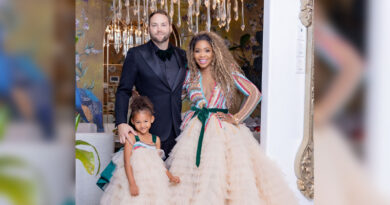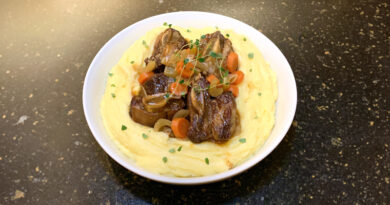Buddy Macatee’s Musings on Dallas Country Club

In today’s edition of Park Cities People, we published the third of three columns by Buddy Macatee on the Dallas Country Club. In case you missed the previous two, here they are:
Feb. 17
New Clubhouse Sparks Memories of Predecessors
The new clubhouse at the Dallas Country Club, the latest of six — three at the current location, Preston Road and Beverly Drive, and three prior ones at Bowser and Welborn in Oak Lawn — opens soon. This elegant and imposing structure doubles the size of the fifth clubhouse, built in 1956, while returning to the Tudor styling of the fourth one, constructed in 1912.
Whatever qualms I’ve had about its size, Michael Thomas, our highly regarded new manager and good man, assures me that I can adapt. I’m sure you’re right, Michael. I suspect any anxiety I feel says more about my age’s resistance to change than anything else. Maybe I associate the razing of our two previous clubhouses, receptacles of so many of my days, with my own departure, as well as the departure of those already gone.
Although the 1912 clubhouse was of Tudor styling and the 1956 clubhouse had contemporary lines, both nurtured pleasant relationships among fellow members and employees at all levels of management and labor. Regardless of size, the social significance of the DCC could be likened to that of a Dairy Queen in our country’s smaller towns. It’s where the action is.
The DCC has had it all! The community’s characters gathered here, played golf and tennis, talked business, told funny stories, exaggerated, even lied a little around tables of food and drink. Wives gave parties and weddings, played bridge and slot machines (for a while), and in time played golf and tennis, all the while preserving civility and encouraging propriety.
Rising distinctly from the shadows of the old Tudor structure are the countless deceased personalities who, along with Dad, connected me to Dallas, as it and I grew up. These men owned their businesses or practices; ran churches, banks, newspapers, schools, hospitals, oil and real estate companies; and were mayors, city councilmen, and representatives in Austin and Washington, D.C.
East Texas oil money oozed toward Dallas banks, carrying its newly rich, who settled in the Park Cities, Preston Hollow, and East Dallas. Caddying for these men, playing golf with their sons, I observed the old and the young at play, and they played hard. I mingled regularly with the “haves” as well as the “have-less” and moved amicably among both groups. I lived Kipling’s challenge to a young man: “To walk with kings — nor lose the common touch.” I did not fully appreciate that experience at the time, but in retrospect I gained a remarkable liberal education in personalities. Who one knew served a great advantage to all but the indolent. I soaked it in, not knowing what “it” was.
I devoted my hours there to having fun, and caddying was a part of the fun.
When I wasn’t caddying or playing golf, I dreamt about it. I took lessons, practiced, and began shooting in the 70s. Behind the green on 18, old codgers lounging at umbrella-shaded tables and smoking cigars wagered on the foursomes as they came down the 18th fairway. These regulars also fed the ducks, quacking wall-to-wall, with handfuls of corn delivered from the clubhouse’s nearby kitchen. Coming down 18, knowing that old man Exline always bet on me, brought me as close as I would ever be to the roar of the crowd at the finish of the Masters.
While the dapper seniors made book on the 18th green, a different drama unfolded on the first tee on Saturday, Sunday, and Wednesday afternoons. Frank, the intense and able caddy master with the gold tooth, managed a difficult operation in seeing that every foursome started on time and with caddies. Frank had the adult caddies carry double for the golfers who gave a 15-cent tip on top of the 85-cent caddy fee. These members were known as “dollar bags.” For the parsimonious, Frank provided boys who caddied 18 holes for only 85 cents and “shagged” practice balls for 25 cents an hour — there was no practice range — on a nearby fairway. Laughter arose from the tee when the tightwads moved down the fairway with their bags still on the tee. Somehow Frank always snared one of the young ones by surprise and put one of the unattended bags on his shoulder.
In the men’s locker room, Pat Flanagan, superb in his job, maintained a cordial and relaxed order that reflected his cheerful integrity. In the shoeshine room, Claude Arthur, a prime beneficiary of Dad’s advice on women and affairs of the heart, drove Dad’s golf cart and reciprocated the great counsel he had received by telling Dad how to play golf. I remember fondly that “Mr. Arthur” gave me a bottle of Mennen’s Skin Bracer when Shirley and I married in 1954. Two years later, son George IV would be born as the old DCC gave way to the construction of the new.
Buddy Macatee is a lifelong Park Cities resident. Once again, skilled editor Kay Barnes delivered your scribe out of the wilderness.
March 30
Grand Old Club Was Site of Youthful Folly
Before Shirley and I got married on Sept. 4, 1954, I had my lively bachelor dinner in the Men’s Grill at the old Dallas Country Club.
In the midst of my introductory remarks of welcome, crisp rolls began coming my way with sufficient accuracy to cause me to lift a large tray off its stand and use it as a shield to protect myself. The flying rolls ricocheted off my shield. As I continued my address to the boisterous crowd, knives, forks, and spoons replaced the rolls. The staccato clinks of metal against metal resound still in my inner ear.
Among the older men at this event were my father, grandfather, Uncle Bill Bernoudy, and my somewhat abashed father-in-law to be, Dr. Dayton McBride, who was less cheerful about surrendering his precious daughter of 22 to all of this. The grill had seen many other raucous events prior to my pre-nuptials. During one of the Texas-OU parties, Johnny Black sat on the bar and sailed china plates across the room to break on the opposite wall, while mock-skeet shooters pointed at them as they flew by and said, “Bang, Bang.” (Years later, when Johnny joined AA, he helped rehabilitate many of the people he had once entertained.)
With the biggest event of our lives only a few days away from this dinner, the energies of all concerned concentrated on the wedding pair, the ceremony, the reception, and the cast of supporters. Perhaps only our parents gave thought to the years ahead for Shirley and me. No one could have predicted that my beloved dad, from a family of long-lived people, would die of a malignant kidney only two years later at the age of 61, and that as a result my and Shirley’s lives would never be the same.
Also within two years, a new DCC clubhouse was under construction. It opened in November of 1957 and lasted 55 years before yielding to its splendid successor. Looking back now, I realize the importance of the Dallas Country Club in my life; it was a home of last resort. If I went there in good standing, they’d take me in. My warmest and most numerous memories, layers upon layers of them, had taken root there in my childhood, adolescence, and young adulthood.
In the 1940s, an outdoor pavilion, complete with a bandstand for summer dances, was nestled in a sea of ivy on the edge of the creek at the west end of the dam. A special flooring tile from Macatee Inc., which curled and buckled when it rained, covered the open dance floor. (Dad always replaced it, probably at his expense.)
At about the age of 10, I could frequently be found sitting on the redwood railing that edged the creek side of the pavilion, eating a sandwich and watching my cork for signs of activity below. Unknown by many is the fact that the DCC provided some great catfish, bream, and bass fishing — in an inlet between what are now the fourth and eighth holes, pools beneath the dam on No. 8, and a beautiful cove between the former 14th and 18th greens.
It was by the deep-water coves near the pavilion that I first met Jimmy Flowers and, later, David Grayson. Fishing with a branch of a tree for a pole, Jimmy needed to borrow some shrimp I got from Tom Thumb in the Village; we remained friends until he died in 2006. David came one day to the section of the creek where I was sailing a toy sailboat tied to a long piece of string. I let him sail the boat for a while, and we, too, became lasting friends until his death this past January.
There used to be a cable-supported swinging bridge across the creek connecting the old clubhouse to the old swimming pool. This was the pool into which Smelly Taylor dove a la Tarzan from a bois d’arc near the deep end, the pool where a skulking Jerry Fullinwider encircled his “Sweet Thing du Jour” at night by the corner ladder under the high board, the pool where Tex Robertson taught Jackie Swain and me to swim in 1939, the pool where a precocious Yvonne Van Duzen Davis narrowed the gaze of male adolescents whenever she applied Coppertone, the pool where Leonard Volk was saved from drowning by Joe Glasco on a quiet summer afternoon.
It was also the pool where, one night in 1945, several of us guys — Harold Henger, Bobby Sam Lee, Bobby Maxwell, Kenneth Topletz, and I — peeled out of our trunks before running naked up the 11th fairway along Beverly Drive, down old No. 12 along Fairfield, left on 17, then back to the pool on 18 in the light of a full moon. Running and jumping and shouting, unencumbered by clothing or restraint, we knew that brief moment the weightless joy of youthful innocence. That night, I felt like I could run forever.
Today, one can no longer see the outline of the pool framed by the stand of trees there along the creek, those old sentinels that once cast their afternoon shade over swimmers and shrieking kids rocking the swinging bridge from side to side. Today, all that has yielded to the new 15th fairway where I, prowling recently before the clubhouse opened in February, located the bulkhead of the swinging bridge in the creek bank just south of the handsome stone bridge, echoing the arches of a Roman aqueduct.
Buddy Macatee is a lifelong Park Cities resident. Editor Kay Barnes loves stories of yesterday as reminders of when she was young.









For some reason only Buddy’s articles get the online treatment…Why can’t we get the past/current issue articles online again???